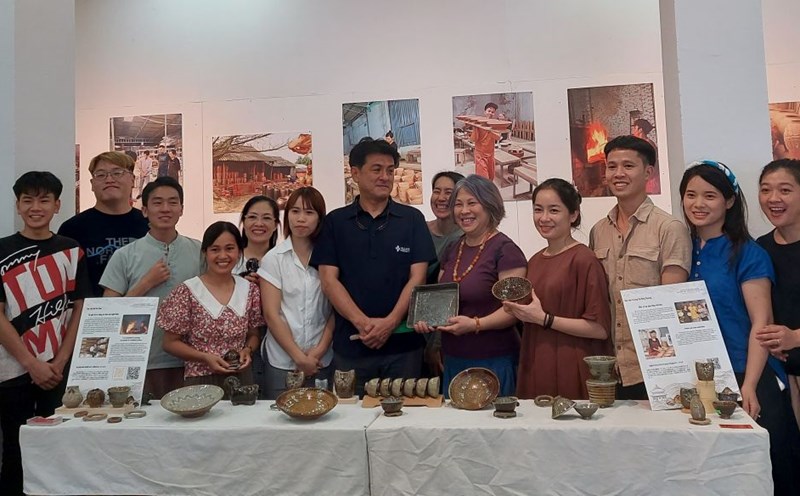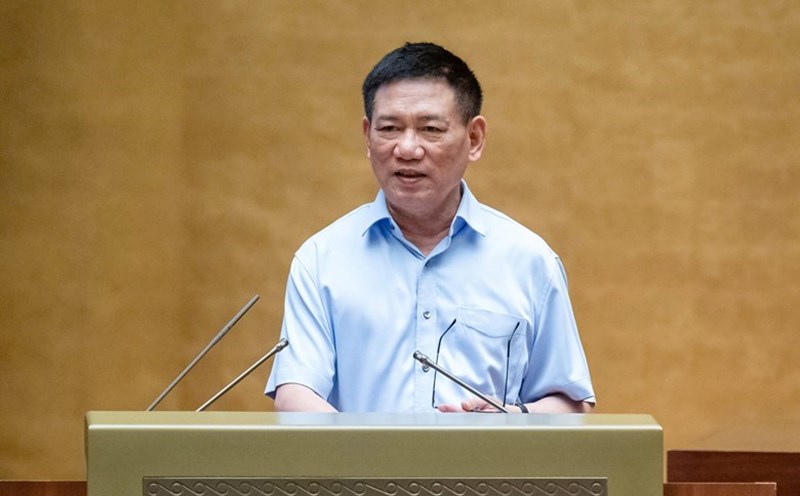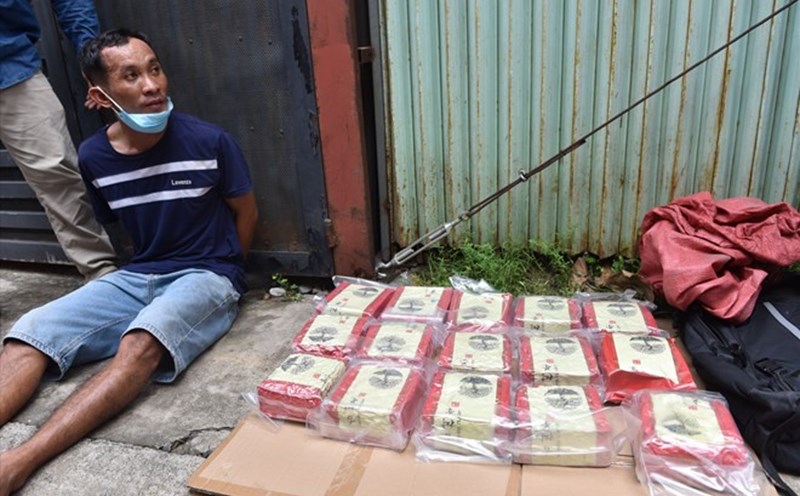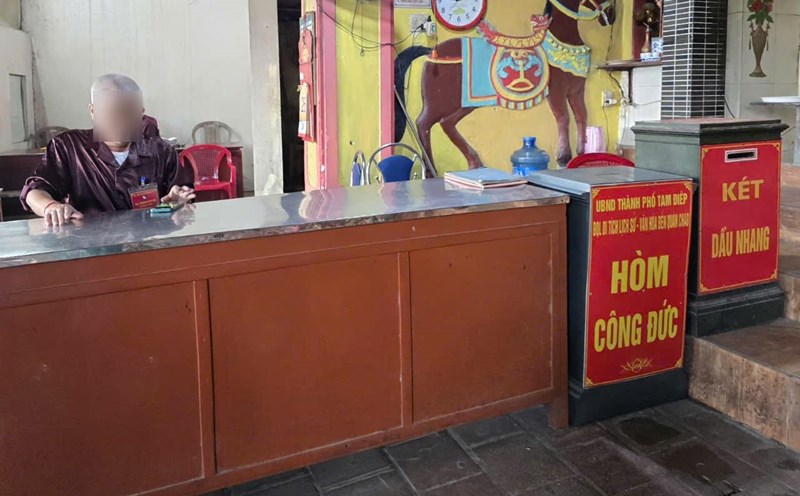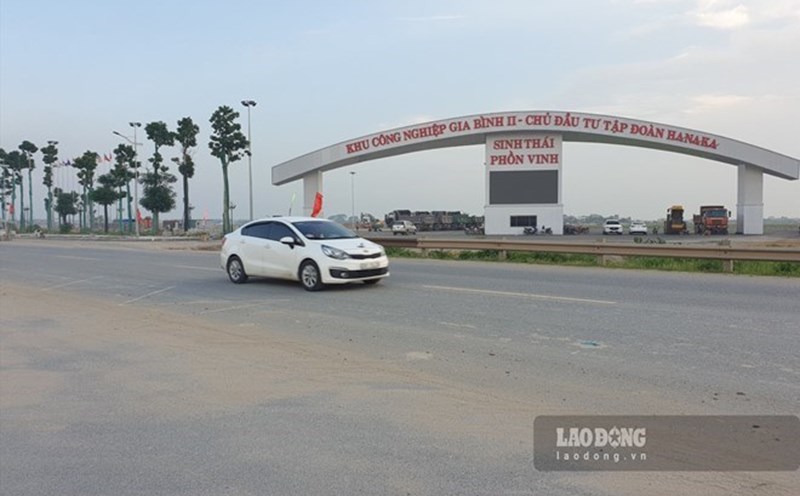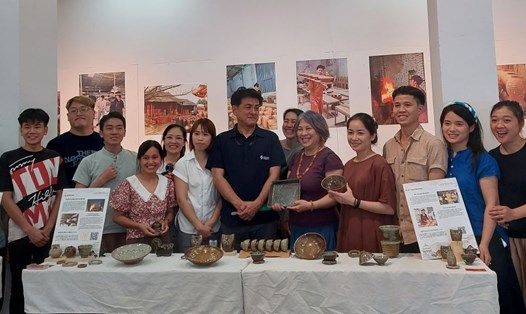Along the banks of Ngu Huyen Khe River, counting on one hand can still name at least 7 villages with Quan Ho tradition . Dao Xa village is one of them. The ancient lyrics have a sentence associated with the unique characteristics of Quan ho playing:
"Dao Xa land has good craftmanship, talented village
continues the family line"
Not only the men, the women of Dao village are equally talented. Not only are they good at making do paper craft, they can also sing well, and Dao village women can also cook three-tiered feasts to invite guests to the village during festivals. In particular, tourists have enjoyed banh thiet and porridge - dishes only found in Dao Xa village, everyone has to praise them.
As one of the few women who were taught by their elders to make banh thiet and rice porridge, Ms. Nguyen Thi Lam - Vice Head of the Quan Ho Club in Dao Xa area excitedly shared with me the unique features of the dish. eat. “I remember when I was young, during village festivals, I would stay at home and learn how to make banh thiet and rice porridge with my mother. When I got there, the festival would end. But thanks to that, I learned to make these two dishes to treat guests and teach them to the next generation," Ms. Lam said about old memories.
Quan Ho feast trays used to go with the phrase "dan tray - dan bowl". According to artisan Nguyen Thi Cu - Ms. Lam's mother, "woven tray" refers to woven bamboo trays, while "dandy bowl" is made of eucalyptus wood. The arrangement of a three-tiered deck is also found in many other ancient Quan Ho villages, in which the top tier often displays dishes unique to the village. In Dao Xa, there is banh thiet, in addition, there is also a famous porridge dish.
Rice porridge is displayed on the bottom floor of the Quan ho feast of Dao village, consisting of five bowls that are cooked very meticulously. The rice used to cook porridge is bao thai pink rice, soaked for about two hours until soft. Then take the rice out, dry it and pound it by hand until it becomes powder. That batch of flour will be sieved again to make it smooth and pliable, but not allowed to "release" or dry the dough, then hold it into small handfuls and boil it in a pot of boiling water.
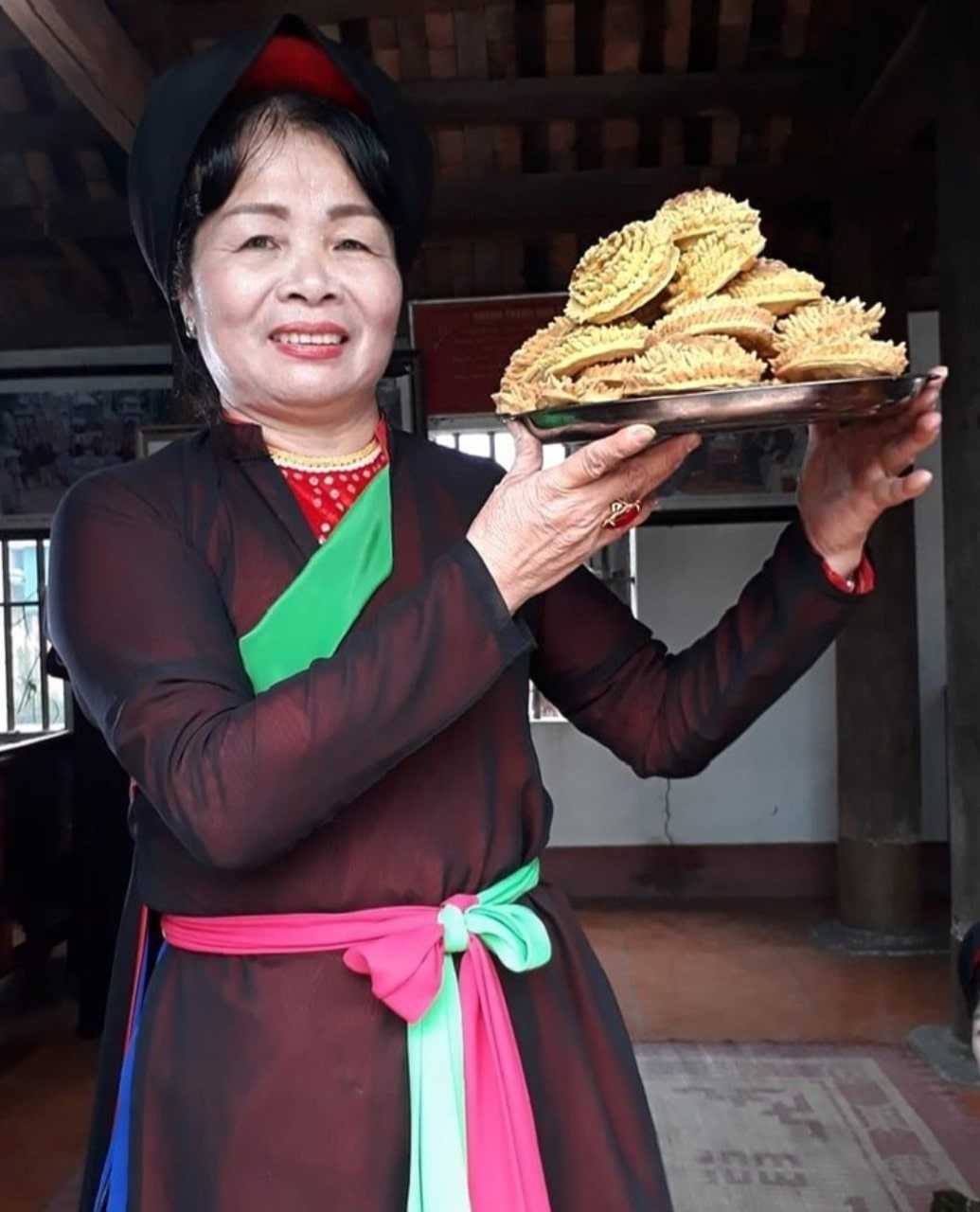
When you see the dough floating like a cake floating in water, half-cooked, half-cooked, take it out. In the past, Dao Xa village made do paper with a very large pestle and mortar. The elders in the village would pound the powder in it until it was mixed together and did not stick to the mortar. Next, form into small handfuls, roll them thinly, slice them, cover them with dry flour and drop them into the pot of chicken broth. Rice porridge in Dao Xa village is only cooked with chicken broth, which is both sweet and delicate.
The second floor of the feast also includes five dishes, which usually include chicken and lean pork sausage because the Quan Ho people believe: "Quan Ho eats chicken, for their father's death anniversary, they eat frogs." There are also other non-fixed dishes such as spring rolls, stir-fried bamboo shoots... The top floor of the feast is all vegetarian dishes, mainly cakes to invite guests after enjoying the savory feast.
The pastries are simple country gifts such as sticky rice cakes, sugar donuts... Particularly on the top plate in Dao Xa village is Banh Thet - a dish that anyone who has ever enjoyed will recognize this when looking at it. is Dao village's feast. From the appearance and flavor of the stolen cake, it shows the bravery, ingenuity and creativity in culinary hospitality of the people of Dao Xa village.
Banh Thet consists of main ingredients: yellow flower sticky rice and brown sugar. The white rice grains, evenly shaped, are soaked in water for about three hours, then dried so that they don't stick when milled. Just like making porridge, rice is pounded or ground into powder and then sifted finely.
“Making banh thiet is the most difficult part when roasting the dough. Only experienced bakers know exactly when the dough is ready," Ms. Lam shared. Since the time of the ancestors, flour was roasted on a charcoal stove, so the women of Dao village had to skillfully keep the fire steady. When first roasting, Ms. Lam said you can also put your hand in the flour pan to stir it, then use chopsticks to roast.
According to the elders, the powder must be seven parts mature, three parts young, and the color of the powder should be pure white. When you put a handful of dough in your hand, you can smell the delicious aroma of yellow flower sticky rice.
“If you roast the dough too young, it won't rise, if it's too old, it will break. The difficulty of making this cake also comes from there," Ms. Lam added. Having received a standard batch of roasted flour, the woman of Dao village takes the flour through, mixes it with water from reserved fruit to create color and soaked water from the bark of the Agarwood tree to make the dough sticky.
“Vong tree helps the cake to be flexible and rise, but nowadays it is very difficult to find. We tried replacing it with other ingredients, but when fried, the cake became stiff and could not rise," Ms. Lam said.
The baker transforms the dough from white dough into a beautiful bright yellow color that is not sticky to the touch. At this time, the dough is rolled out thinly, using a round mold to shape the dough. Many dishes are named from ingredients such as banh khuc, banh gai... Some dishes get their name from the baking process, including banh thiet.
“Stealing” is when the baker uses tweezers to steal the cake in a circular shape from the outside to the inside. The woman of Dao village must be very meticulous when holding the dough ball with one hand, rotating it evenly, and with the other hand using tweezers to pick up the dough so that the distance between the segments and lines is not skewed, forming a cone shape.
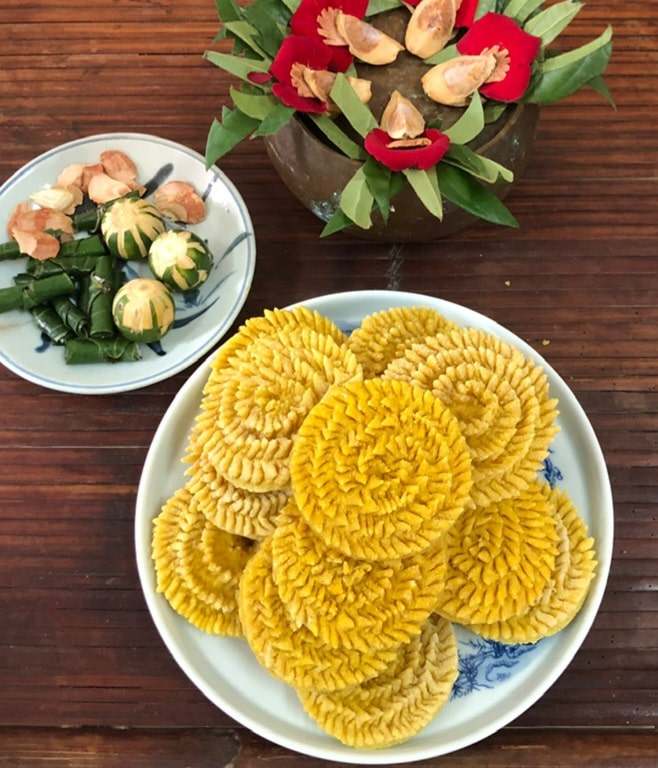
Next, fry the cake in hot oil, turn it evenly, and when it is cooked, the cake and segments will open up like extremely beautiful flowers. To create a sweet taste for banh thiet, Ms. Lam said she would boil sugar until it thickens and changes the color of cockroach wings, then sprinkle it on top of the cooked banh thiet.
When guests come to visit Dao Xa village, after having fun with their brothers and sisters, they will be invited into the communal house to enjoy the Quan Ho feast. "The back is like a Quan Ho feast, as big as a Khao feast", in a cozy space, echoing the echoes of songs, visitors can admire a three-tiered feast with a plate of banh thiet as beautiful as yellow flowers, interspersed with " The brown pistil of a cockroach's wing blooms on the tray. Rice porridge is sweet and light with a soft, chewy "porridge". Banh thiet is crispy on the outside and soft on the inside. Once you taste it, you'll want to taste more because of the sweet, fragrant taste of sugar and rice.
Such is the love and affection of the people of the Quan Ho region. If they can sing well, the food they serve to guests must also be delicious and neat. Banh thiet and rice porridge on a three-tiered tray in Dao Xa village not only show the uniqueness of the cuisine but also show the appreciation for tourists, the talent and meticulousness in cooking of Dao village women.
Therefore, even though making cakes is difficult and cooking porridge is a feat, women like Mrs. Lam still diligently teach it to the next generation. Because this is a unique characteristic, a pride in the hearts of the people of Dao Xa village with their homeland and tourists from everywhere.


